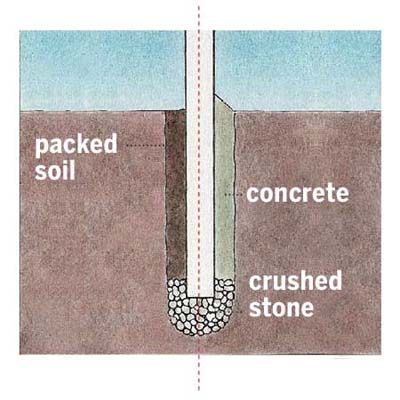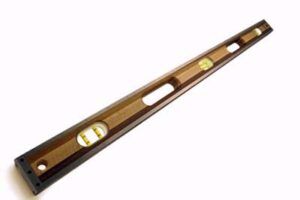Fence posts support your fence, define property lines, provide privacy, and upgrade your home’s exterior. This guide will help you correctly install and maintain your new fence posts, keeping them safe and weather-resistant. While DIY installation is possible for many homeowners, don’t hesitate to hire a professional if you have major problems, find the project too complex, or have doubts about your skills or safety.
Types of Fence Posts
Different types of fence post materials have their own advantages, so consider the fence type, climate, and personal preference:
- Metal: Such as steel or aluminum, strong and rot-resistant
- Vinyl: Low-maintenance option that won’t splinter or decay
- Wood: Traditional and blends well with natural surroundings
Factors Affecting Fence Post-Installation
Soil type will have a major impact on your installation, as sandy or clay soils may require different installation techniques. Freeze-thaw cycles or high winds can affect the depth of your post and any anchoring methods you use. Local building codes and property lines must also be considered to stay in compliance and avoid disputes with neighbors.
Tools and Materials
These are the tools you’ll need to complete this project. Be sure to wear safety equipment to protect yourself from injury:
- Level
- Post hole digger or power auger
- Shovel
- String line
- Tamper
- Tape measure
- Wheelbarrow (if using concrete)
Make sure you have all of the materials you’ll need on hand to get the project done:
- Concrete mix (if required)
- Fence posts
- Gravel or crushed stone
- Strings
- Water (for mixing concrete)
- Wooden stakes

How Deep Should a Fence Post Be?
A general rule of thumb is to dig the hole about one-third the height of the post plus an additional 6 inches for gravel base. For an average residential fence post, about 6 to 8 feet tall, dig a post hole about 2 feet deep. Taller fences or those in areas with high winds may need deeper holes. You may need to dig deeper for stability in areas with sandy soil or frequent freeze-thaw cycles. Rocky soil might limit how deep you can dig, and you may need to use different anchoring methods.
How Far Apart Should the Posts Be?
Typically, most residential fence posts are spaced 6 to 8 feet apart. For corner posts or areas experiencing higher stress, you can reduce the spacing to 4 to 6 feet to add extra support. You may need to adjust your spacing depending on the type of terrain around your home and your fence design.
Step-By-Step Guide To Installing a Fence Post
Here’s how to properly install your fence post for the best results:
Mark and Dig the Post Hole
- Use stakes and string to mark your fence line.
- Mark the locations for your post holes, typically spaced 6 to 8 feet apart.
- Dig holes 24 to 30 inches deep for most picket or lattice fences using a post hole digger or power auger.
Prep the Post Base
- Remove any loose soil from the bottom of the hole.
- Add 6 inches of ¾-inch crushed stone to the hole to promote drainage.
- Compact the stone using a tamper.
Set and Align the Post
- Place the post in the hole, and check that it’s plumb using a level.
- Adjust the post height as needed, making sure all posts are consistent.
- Brace the post temporarily to keep it straight while filling the hole.
Backfill and Compact the Soil
- Fill around the post with soil removed from the hole, minus the topsoil.
- Pack the soil firmly every 6 inches using a tamper.
- In sandy soil, mix in gravel to improve packing. For clay soil, use only gravel around posts to enhance drainage.
When and How To Use Concrete for Fence Posts
While not always necessary, and often more time and money-consuming, concrete can provide additional stability for certain fence posts. You’ll need to pour a concrete footing for posts that:
- Are freestanding at the end of the fence
- Cannot be dug deep enough due to rocky soil conditions
- Support a gate
Mixing and Pouring Concrete for Posts
- Mix concrete according to manufacturer’s instructions in a wheelbarrow.
- Pour the concrete into the hole, filling it about 2 inches below ground level.
- Slope the concrete away from the post to direct water away.
- Allow the concrete to set for at least 24 hours before continuing fence installation. The posts must be braced until the concrete sets.
Setting Fence Posts on Different Terrains
You must adapt your approach to your terrain so the fence remains stable and properly aligned.
Fencing on Sloped Ground
Installing fence posts on sloped terrain requires careful planning and execution:
- Start at the highest point and determine your first post location.
- Use a string line to map out the fence’s top line, keeping the top line level along the slope.
- Position each post according to the string line, stepping down from the previous post.
- Check the post alignment and adjust as needed before setting them in the ground.
Working on Rocky or Sandy Soil
Rocky and sandy soils present unique challenges for fence post installation:
- Rocky Soil: If there are large rocks, use a power auger or manual digging to remove them. For extremely rocky ground, consider metal post anchors or foam products that expand into the ground for stability since digging might be limited.
- Sandy Soil: To counter the loose soil, install posts deeper than usual. Mix gravel with the backfill soil and compact the soil firmly around the post.
Taking Care of Your Installed Fence Posts
Regular maintenance can keep your fence posts looking nice and save you time and money on repairs.
Regular Inspection Routine
Perform these checks routinely:
- Apply a water-repellent sealant to wood posts every few years to prevent water damage
- Check for signs of rot, especially at ground level
- Confirm the posts are plumb and securely anchored
- If a post becomes loose, add gravel or expand foam around the base to restabilize it
- Look for cracks or splits in wooden posts
- Make sure metal posts are free from rust or corrosion
- Replace severely damaged or rotted posts immediately to keep your fence in good shape
- Tighten any loose hardware connecting fence panels to posts
Tools You’ll Need
 Post hole digger
Post hole digger Pointed shovel
Pointed shovel 6 foot level
6 foot level



